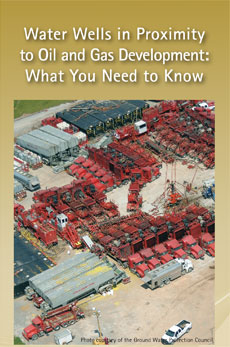Hydraulic Fracturing Brochure for Water Well Owners
 A water-testing brochure for household water well owners living near oil and gas development and completion activities, including hydraulic fracturing, has been produced by the National Ground Water Association and the Ground Water Protection Council.
A water-testing brochure for household water well owners living near oil and gas development and completion activities, including hydraulic fracturing, has been produced by the National Ground Water Association and the Ground Water Protection Council.
As currently defined by the National Ground Water Association, the term hydraulic fracturing is used to describe the largely oilfield process of high-volume, high-pressure hydraulic fracturing (HVHF), colloquially lumped with other practices as “fracking.” This process may also be used to develop deep, high capacity water wells, but usually not domestic water wells.
The process known as water well hydrofracturing (WWHF) is distinguished from HVHF by its 1) smaller scale and lower pressures, 2) rare or no use of chemical enhancements (sometimes in well rehabilitation), and 3) rare or no use of propping materials to hold fractures open. NGWA has a short manual describing WWHF. WWHF is mostly used in hard-rock igneous and metamorphic rock aquifers, such as found in New England and northern Wisconsin, while HVHF is used on sandstone oil and gas reservoirs and shale rock.
Click here to view or download the brochure, which is an abbreviated version of the previously published NGWA Information Brief on Water Wells in Proximity to Natural Gas or Oil Development.


